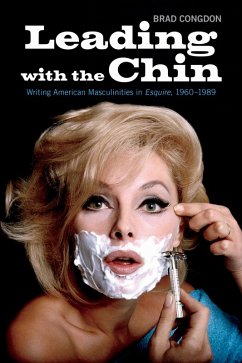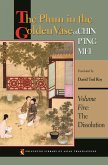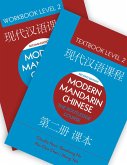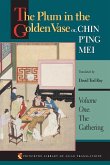- Broschiertes Buch
- Merkliste
- Auf die Merkliste
- Bewerten Bewerten
- Teilen
- Produkt teilen
- Produkterinnerung
- Produkterinnerung
Leading with the Chin is a fascinating examination of the changing representations of twentieth-century masculinity in Esquire, Americaâ s oldest menâ s interest magazine.
Andere Kunden interessierten sich auch für
![The Digital Silk Road The Digital Silk Road]() The Digital Silk Road42,99 €
The Digital Silk Road42,99 €![The Plum in the Golden Vase Or, Chin P'Ing Mei, Volume Five The Plum in the Golden Vase Or, Chin P'Ing Mei, Volume Five]() The Plum in the Golden Vase Or, Chin P'Ing Mei, Volume Five46,99 €
The Plum in the Golden Vase Or, Chin P'Ing Mei, Volume Five46,99 €![Modern Mandarin Chinese: The Routledge Course Level 2 Bundle Modern Mandarin Chinese: The Routledge Course Level 2 Bundle]() Claudia RossModern Mandarin Chinese: The Routledge Course Level 2 Bundle119,99 €
Claudia RossModern Mandarin Chinese: The Routledge Course Level 2 Bundle119,99 €![The Japanese Chin - A Complete Anthology of the Dog The Japanese Chin - A Complete Anthology of the Dog]() Various (selected by the Federation of Children's Book Groups)The Japanese Chin - A Complete Anthology of the Dog45,99 €
Various (selected by the Federation of Children's Book Groups)The Japanese Chin - A Complete Anthology of the Dog45,99 €![The Plum in the Golden Vase or, Chin P'ing Mei, Volume Four The Plum in the Golden Vase or, Chin P'ing Mei, Volume Four]() The Plum in the Golden Vase or, Chin P'ing Mei, Volume Four46,99 €
The Plum in the Golden Vase or, Chin P'ing Mei, Volume Four46,99 €![The Plum in the Golden Vase or, Chin P'ing Mei, Volume One The Plum in the Golden Vase or, Chin P'ing Mei, Volume One]() David Tod Roy (ed.)The Plum in the Golden Vase or, Chin P'ing Mei, Volume One48,99 €
David Tod Roy (ed.)The Plum in the Golden Vase or, Chin P'ing Mei, Volume One48,99 €![The Belt and Road Initiative in Asia, Africa, and Europe The Belt and Road Initiative in Asia, Africa, and Europe]() The Belt and Road Initiative in Asia, Africa, and Europe169,99 €
The Belt and Road Initiative in Asia, Africa, and Europe169,99 €-
-
-
Leading with the Chin is a fascinating examination of the changing representations of twentieth-century masculinity in Esquire, Americaâ s oldest menâ s interest magazine.
Hinweis: Dieser Artikel kann nur an eine deutsche Lieferadresse ausgeliefert werden.
Hinweis: Dieser Artikel kann nur an eine deutsche Lieferadresse ausgeliefert werden.
Produktdetails
- Produktdetails
- Verlag: University of Toronto Press
- Seitenzahl: 288
- Erscheinungstermin: 3. November 2018
- Englisch
- Abmessung: 153mm x 228mm x 18mm
- Gewicht: 456g
- ISBN-13: 9781487522162
- ISBN-10: 1487522169
- Artikelnr.: 54317995
- Herstellerkennzeichnung
- Libri GmbH
- Europaallee 1
- 36244 Bad Hersfeld
- gpsr@libri.de
- Verlag: University of Toronto Press
- Seitenzahl: 288
- Erscheinungstermin: 3. November 2018
- Englisch
- Abmessung: 153mm x 228mm x 18mm
- Gewicht: 456g
- ISBN-13: 9781487522162
- ISBN-10: 1487522169
- Artikelnr.: 54317995
- Herstellerkennzeichnung
- Libri GmbH
- Europaallee 1
- 36244 Bad Hersfeld
- gpsr@libri.de
Brad Congdon received his PhD from Dalhousie University, where he is an Instructor in Gender & Women’s Studies and English.
Acknowledgments
Introduction: The Crisis of Masculinity and the Problem of Identity
Theoretical and Methodological Background
Case Study: November 1958
Chapter Breakdown
Part One: Recovering Masculinity in the 1960s
1 American Dreams, Gendered Nightmares
1. The Crisis of Masculinity and the Problem of Conformity
2. Hegemonic Masculinity in An American Dream
3. An American Dream and Esquire Magazine
4. Conclusion
2 Cooling It with James Baldwin
1. Baldwin’s Critique of Hegemonic Masculinity
2. Baldwin’s Queer Critique of Race in Esquire
3. "James Baldwin Tells Us All How to Cool It This Summer"
4. Conclusion
Part Two: "The Richness of Life Itself" in the 1970s
3 Low-Rent Tragedies of Beset Manhood
1. "The Market Represents": Esquire, Carver, and Consumer Realism
2. Carver’s First Esquire Story: "Neighbors" and the "Space" of
Advertising
3. "What Is It?" and "Collectors" - Reified Masculinities, Diminished
Selfhood
4. Conclusion
4 True Men and Queer Spaces in Truman Capote’s Answered Prayers
1. Gay Visibility and Esquire’s Queer ’70s
2. Capote’s Critique of Heteronormativity
3. Fugitives from the Gender Order: Best-Kept Boys and Queer Utopias
4. Conclusion
Part Three: Cold Warriors of the 1980s
5 Sexual Fallout in Tim O’Brien’s The Nuclear Age
1. Cold War Discourse and Gender Trouble in The Nuclear Age
2. Cold Warriors and Cowboys: "Somewhere the Duke Is Smiling"
3. Retrenching the Domestic Sphere in "Grandma’s Pantry"
4. "Ovaries Like Hand Grenades": Emphasized Femininities in The Nuclear
Age
5. Conclusion
6 Don DeLillo in the American Kitchen
1. "Men in Small Rooms": American Masculinity, American Kitchens
2. "Suck in That Gut, America!": JFK’s Exemplary Masculinities
3. Getting a Grip on the Runaway World: The Author as Exemplary
Masculinity
4. Conclusion
Conclusion: How to Be a Man
Notes
Works Cited
Index
Introduction: The Crisis of Masculinity and the Problem of Identity
Theoretical and Methodological Background
Case Study: November 1958
Chapter Breakdown
Part One: Recovering Masculinity in the 1960s
1 American Dreams, Gendered Nightmares
1. The Crisis of Masculinity and the Problem of Conformity
2. Hegemonic Masculinity in An American Dream
3. An American Dream and Esquire Magazine
4. Conclusion
2 Cooling It with James Baldwin
1. Baldwin’s Critique of Hegemonic Masculinity
2. Baldwin’s Queer Critique of Race in Esquire
3. "James Baldwin Tells Us All How to Cool It This Summer"
4. Conclusion
Part Two: "The Richness of Life Itself" in the 1970s
3 Low-Rent Tragedies of Beset Manhood
1. "The Market Represents": Esquire, Carver, and Consumer Realism
2. Carver’s First Esquire Story: "Neighbors" and the "Space" of
Advertising
3. "What Is It?" and "Collectors" - Reified Masculinities, Diminished
Selfhood
4. Conclusion
4 True Men and Queer Spaces in Truman Capote’s Answered Prayers
1. Gay Visibility and Esquire’s Queer ’70s
2. Capote’s Critique of Heteronormativity
3. Fugitives from the Gender Order: Best-Kept Boys and Queer Utopias
4. Conclusion
Part Three: Cold Warriors of the 1980s
5 Sexual Fallout in Tim O’Brien’s The Nuclear Age
1. Cold War Discourse and Gender Trouble in The Nuclear Age
2. Cold Warriors and Cowboys: "Somewhere the Duke Is Smiling"
3. Retrenching the Domestic Sphere in "Grandma’s Pantry"
4. "Ovaries Like Hand Grenades": Emphasized Femininities in The Nuclear
Age
5. Conclusion
6 Don DeLillo in the American Kitchen
1. "Men in Small Rooms": American Masculinity, American Kitchens
2. "Suck in That Gut, America!": JFK’s Exemplary Masculinities
3. Getting a Grip on the Runaway World: The Author as Exemplary
Masculinity
4. Conclusion
Conclusion: How to Be a Man
Notes
Works Cited
Index
Acknowledgments
Introduction: The Crisis of Masculinity and the Problem of Identity
Theoretical and Methodological Background
Case Study: November 1958
Chapter Breakdown
Part One: Recovering Masculinity in the 1960s
1 American Dreams, Gendered Nightmares
1. The Crisis of Masculinity and the Problem of Conformity
2. Hegemonic Masculinity in An American Dream
3. An American Dream and Esquire Magazine
4. Conclusion
2 Cooling It with James Baldwin
1. Baldwin’s Critique of Hegemonic Masculinity
2. Baldwin’s Queer Critique of Race in Esquire
3. "James Baldwin Tells Us All How to Cool It This Summer"
4. Conclusion
Part Two: "The Richness of Life Itself" in the 1970s
3 Low-Rent Tragedies of Beset Manhood
1. "The Market Represents": Esquire, Carver, and Consumer Realism
2. Carver’s First Esquire Story: "Neighbors" and the "Space" of
Advertising
3. "What Is It?" and "Collectors" - Reified Masculinities, Diminished
Selfhood
4. Conclusion
4 True Men and Queer Spaces in Truman Capote’s Answered Prayers
1. Gay Visibility and Esquire’s Queer ’70s
2. Capote’s Critique of Heteronormativity
3. Fugitives from the Gender Order: Best-Kept Boys and Queer Utopias
4. Conclusion
Part Three: Cold Warriors of the 1980s
5 Sexual Fallout in Tim O’Brien’s The Nuclear Age
1. Cold War Discourse and Gender Trouble in The Nuclear Age
2. Cold Warriors and Cowboys: "Somewhere the Duke Is Smiling"
3. Retrenching the Domestic Sphere in "Grandma’s Pantry"
4. "Ovaries Like Hand Grenades": Emphasized Femininities in The Nuclear
Age
5. Conclusion
6 Don DeLillo in the American Kitchen
1. "Men in Small Rooms": American Masculinity, American Kitchens
2. "Suck in That Gut, America!": JFK’s Exemplary Masculinities
3. Getting a Grip on the Runaway World: The Author as Exemplary
Masculinity
4. Conclusion
Conclusion: How to Be a Man
Notes
Works Cited
Index
Introduction: The Crisis of Masculinity and the Problem of Identity
Theoretical and Methodological Background
Case Study: November 1958
Chapter Breakdown
Part One: Recovering Masculinity in the 1960s
1 American Dreams, Gendered Nightmares
1. The Crisis of Masculinity and the Problem of Conformity
2. Hegemonic Masculinity in An American Dream
3. An American Dream and Esquire Magazine
4. Conclusion
2 Cooling It with James Baldwin
1. Baldwin’s Critique of Hegemonic Masculinity
2. Baldwin’s Queer Critique of Race in Esquire
3. "James Baldwin Tells Us All How to Cool It This Summer"
4. Conclusion
Part Two: "The Richness of Life Itself" in the 1970s
3 Low-Rent Tragedies of Beset Manhood
1. "The Market Represents": Esquire, Carver, and Consumer Realism
2. Carver’s First Esquire Story: "Neighbors" and the "Space" of
Advertising
3. "What Is It?" and "Collectors" - Reified Masculinities, Diminished
Selfhood
4. Conclusion
4 True Men and Queer Spaces in Truman Capote’s Answered Prayers
1. Gay Visibility and Esquire’s Queer ’70s
2. Capote’s Critique of Heteronormativity
3. Fugitives from the Gender Order: Best-Kept Boys and Queer Utopias
4. Conclusion
Part Three: Cold Warriors of the 1980s
5 Sexual Fallout in Tim O’Brien’s The Nuclear Age
1. Cold War Discourse and Gender Trouble in The Nuclear Age
2. Cold Warriors and Cowboys: "Somewhere the Duke Is Smiling"
3. Retrenching the Domestic Sphere in "Grandma’s Pantry"
4. "Ovaries Like Hand Grenades": Emphasized Femininities in The Nuclear
Age
5. Conclusion
6 Don DeLillo in the American Kitchen
1. "Men in Small Rooms": American Masculinity, American Kitchens
2. "Suck in That Gut, America!": JFK’s Exemplary Masculinities
3. Getting a Grip on the Runaway World: The Author as Exemplary
Masculinity
4. Conclusion
Conclusion: How to Be a Man
Notes
Works Cited
Index








